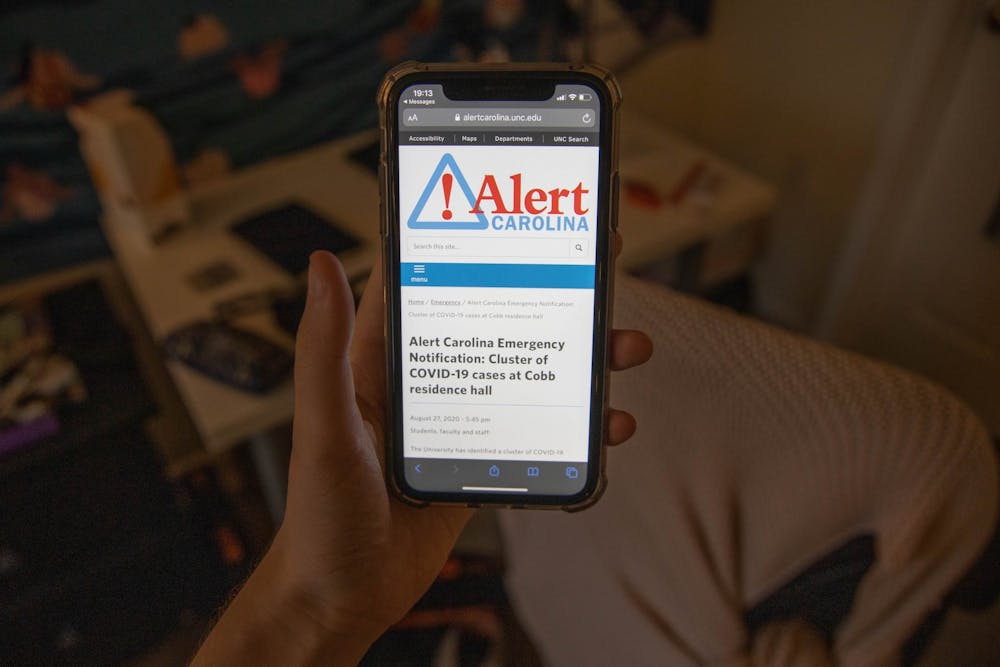He said there are multiple factors that determine whether to activate the alert system.
“We will look for repetitive calls, corroborating information, impact for that area — there are a number of factors that weigh into that,” Perry said. “It’s not always clear-cut, and we try not to put ourselves in a box where we are limited and bound by A, B, C or D.”
Perry said many safety protocols were considered when dispatching officers to the alleged armed shooter situation in the Ambulatory Care Center. He said a concerned citizen observed what they believed to be a rifle being carried into the center and that another call describing a similar set of circumstances was placed soon after.
The call went out to the UNC Police communications center and was shared with the Orange County Emergency Services personnel, he said. Additionally, a SWAT team conducting unrelated operations in the area saw the alert go out from Orange County and began heading to UNC’s campus, Perry said.
“All these things are happening simultaneously, we now get a second call, and because of the information we received, it was just in the best interest to go ahead and do what was safe for those people in that facility,” he said.
But, that does not mean the process of deciding when to send out emergency notifications is foolproof.
“We have made substantive changes and improvements to Alert Carolina in the dissemination of information using multiple platforms,” Perry said. “Being concise, the tools that we use and speeding up that process, making sure that we are not delaying any notification — that would be important.”
Perry said the system is continuing to be improved and cited the inappropriate use of the acronym "ACC" in the recent emergency notification.
“I’m not pointing blame at anyone, because in the heat of the moment, you use the vernacular for things that are comfortable with you,” he said. “We have to think larger and more globally than that when we’re sending out emergency notifications, because not everyone knows 'ACC' stands for 'Ambulatory Care Center.'”
During the alert, classes continued. Provost Bob Blouin said in a statement that it is not UNC’s emergency response protocol to immediately cancel class. He said that when classes are in person, it is crucial from a public safety standpoint for everyone to remain and take cover in classrooms with lockable doors.
“We are grateful that this turned out to be a false alarm, and that most of our students were not physically on campus,” Blouin said. “The incident raised important questions that we will consider moving forward about how public safety incidents interact with virtual instruction.”
Lamar Richards, chairperson of the Commission on Campus Equality and Student Equity, said the function of an emergency alert system is to inform a person in the path of violence how to evade or navigate out of the dangerous situation at hand.
To get the day's news and headlines in your inbox each morning, sign up for our email newsletters.
He said Alert Carolina’s instructions to take shelter were too unclear for students residing on campus.
“How many times do we use terms and we use directions that people don’t really know what they mean?” he said. “Take shelter, what does that really mean? Does that mean I should barricade the door? Should I go into the bathroom to hide?”
Richards said that this recent situation highlighted a need to focus on comprehensive communication.
“A bullet can pierce the skin of any human being,” he said. “No matter who’s the target, any person can be a bystander in the wrong place at the right time.”
For Richards, safety as a UNC student and as a person is a relative thing. He said that as a Black man, he doesn’t feel safe anywhere in this country.
“More specifically at Carolina, given our history of protests and because we’re a public university, I don’t feel safer at Carolina,” he said. “I think more importantly, due to lack of effective communication, we as a people — and I’m speaking more specifically about Black people — can never truly feel safe.”
The University needs to invest in student outreach and show that they’re willing to do extra work to repair the relationship between them and marginalized students, Richards said.
“Communication is not a one-size-fits-all experience,” he said.
university@dailytarheel.com



